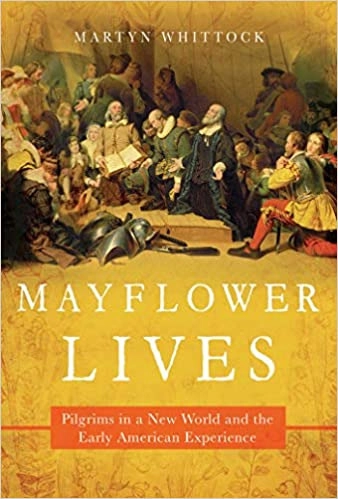Reading Level
What is the reading level of Mayflower Lives: Pilgrims in a New World and the Early American Experience?
Analysing the books in the series, we estimate that the reading level of Mayflower Lives: Pilgrims in a New World and the Early American Experience is 9th and 10th grade.
Expert Readability Tests for
Mayflower Lives: Pilgrims in a New World and the Early American Experience
| Readability Test | Reading Level |
|---|---|
| Flesch Kincaid Scale | Grade 10 |
| SMOG Index | Grade 12 |
| Coleman Liau Index | Grade 10 |
| Dale Chall Readability Score | Grade 7 |
Reading Time
7 hrs 26 mins
How long to read Mayflower Lives: Pilgrims in a New World and the Early American Experience?
The estimated word count of Mayflower Lives: Pilgrims in a New World and the Early American Experience is 111,445 words.
A person reading at the average speed of 250 words/min, will finish the book in 7 hrs 26 mins. At a slower speed of 150 words/min, they will finish it in 12 hrs 23 mins. At a faster speed of 450 words/min, they will finish it in 4 hrs 8 mins.
| Mayflower Lives: Pilgrims in a New World and the Early American Experience - 111,445 words | ||
|---|---|---|
| Reading Speed | Time to Read | |
| Slow | 150 words/min | 12 hrs 23 mins |
| Average | 250 words/min | 7 hrs 26 mins |
| Fast | 450 words/min | 4 hrs 8 mins |
- Authors
-
Martyn Whittock
More about Mayflower Lives: Pilgrims in a New World and the Early American Experience
111,445 words
Word Count
for Mayflower Lives: Pilgrims in a New World and the Early American Experience
320 pages
Pages
11 hours and 59 minutes
Audiobook length
Description
A fresh and revealing history of one of the most seminal events in American history as seen through fourteen diverse and dynamic figures.Leading into the 400th anniversary of the voyage of the Mayflower, Martyn Whittock examines the lives of the “saints” (members of the Separatist puritan congregations) and “strangers” (economic migrants) on the original ship who collectively became known to history as “the Pilgrims.” The story of the Pilgrims has taken on a life of its own as one of our founding national myths—their escape from religious persecution, the dangerous transatlantic journey, that brutal first winter. Throughout the narrative, we meet characters already familiar to us through Thanksgiving folklore—Captain Jones, Myles Standish, and Tisquantum (Squanto)—as well as new ones. There is Mary Chilton, the first woman to set foot on shore, and asylum seeker William Bradford. We meet fur trapper John Howland and little Mary More, who was brought as an indentured servant. Then there is Stephen Hopkins, who had already survived one shipwreck and was the only Mayflower passenger with any prior American experience. Decidedly un-puritanical, he kept a tavern and was frequently chastised for allowing drinking on Sundays. Epic and intimate, Mayflower Lives is a rich and rewarding book that promises to enthrall readers of early American history.
